FOOD
28 Foods That We Have Loved And Left Behind For A Reason
Published
3 months agoon
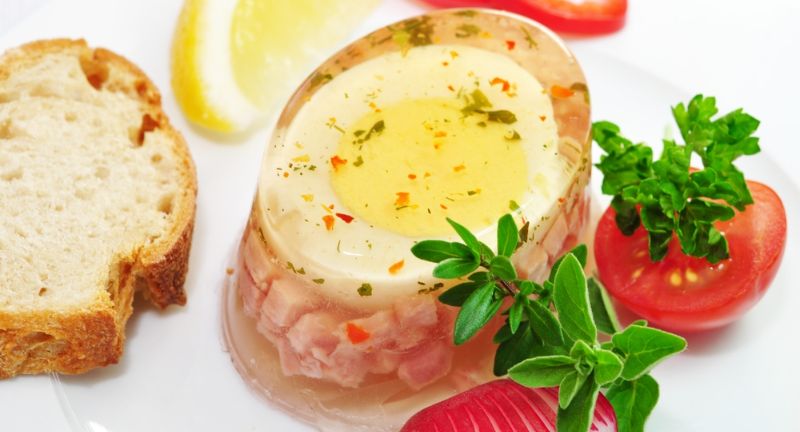
Shutterstock
Food trends often serve as a time capsule, reflecting the cultural and social moments of their era. Over the past 70 years, we’ve seen an incredible evolution in what graces our plates, from quirky gelatin molds to Instagram-worthy creations. Some of these foods are nostalgic favorites, while others have been left behind for good reason. They were bold, creative, and sometimes outright baffling, but they all have a place in culinary history. Join us as we take a deliciously retro journey through 28 foods that we loved in the past but are happy to leave there.
Aspic

Shutterstock
Aspic, a gelatin mold with suspended vegetables, meats, or seafood, was a symbol of culinary sophistication in the 1950s. While visually striking, its odd texture and savory flavor baffled modern palates. These gelatin creations adorned dinner tables, reflecting post-war abundance and creativity. However, the dish is now more of a historical curiosity than a dinner-party favorite.
Spam Casserole

Shutterstock
Spam casserole was a 1950s kitchen staple, offering an easy, protein-packed meal. Families embraced it for its convenience, mixing the canned meat with pasta, potatoes, or veggies. Despite its practicality, the dish’s overly salty and processed taste hasn’t aged well. Today, Spam is more likely to be an ironic treat or a curiosity than a casserole mainstay.
Liver and Onions

Shutterstock
Liver and onions were once heralded as a nutritious meal, rich in iron and vitamins. This hearty dish graced many dinner tables, particularly in the 1950s and ’60s. However, the metallic taste of liver paired with the pungency of onions left many diners divided. Over the years, it has fallen out of favor as tastes moved toward milder flavors.
TV Dinners

Shutterstock
TV dinners revolutionized the 1950s meal experience, offering a quick and convenient solution for busy families. These frozen trays often featured compartments of meatloaf, peas, and mashed potatoes, all ready to eat in minutes. Despite their novelty, the meals were criticized for being bland and overly processed. They remain a nostalgic memory of a simpler culinary era.
Tang

Shutterstock
Tang became a sensation in the 1960s, especially after being marketed as the drink astronauts took to space. This orange-flavored powdered mix promised convenience and a futuristic appeal. However, its artificial taste and high sugar content didn’t hold up as health trends evolved. While it still has a cult following, Tang is often viewed as a relic of a bygone era.
Pineapple and Ham Jello Salad

Shutterstock
The 1960s love affair with gelatin reached new heights with pineapple and ham Jello salad. Combining sweet fruit, savory ham, and a lime gelatin base, it was a staple at potlucks and parties. While it reflected the era’s adventurous spirit, the taste combination often puzzled diners. Today, it’s more likely to inspire laughter than appetite.
Canapé Trees

Shutterstock
Canapé trees, often constructed with a Styrofoam base and toothpicks, were a whimsical centerpiece of 1960s gatherings. Decorated with skewered olives, cheese cubes, and cocktail sausages, they were both decorative and edible. Despite their playful appearance, the mishmash of flavors wasn’t always a hit. Modern parties favor charcuterie boards over this retro display.
Deviled Ham Spread

Shutterstock
Deviled ham spread, a staple of 1960s lunchboxes and picnics, combined canned ham with spices for a tangy sandwich filler. Convenient and shelf-stable, it was a practical choice for families. Unfortunately, its overly salty and processed flavor has led many to leave it behind. Today, it serves more as a nostalgic memory than a pantry necessity.
Fondue

Shutterstock
Fondue took the 1970s by storm, inviting people to dip bread, meat, and veggies into molten cheese or hot oil. The communal nature of the dish made it a party favorite. However, the mess and high-calorie nature of fondue eventually led to its decline. While fondue sets still exist, they are more often gathering dust than making dinner magic.
Ambrosia Salad

Shutterstock
Ambrosia salad, a mix of canned fruit, marshmallows, and whipped topping, epitomized the sweet tooth of the 1970s. It was a staple at holiday tables and potlucks. While it provided a unique blend of textures, the overly sweet combination often overwhelmed palates. Today, its retro charm is appreciated more than its flavor.
Vienna Sausage Appetizers

Shutterstock
Vienna sausages, those tiny canned meat links, were a frequent guest at 1970s cocktail parties. Served skewered or wrapped in dough, they were quick and easy to prepare. Their highly processed flavor and soft texture, however, didn’t age well. Today, they are more often a novelty than a serious snack option.
Egg in Aspic

Shutterstock
Egg in aspic combined the gelatin craze of the 1970s with a boiled egg suspended in a clear, savory jelly. While visually intriguing, the concept of biting into a cold egg surrounded by gelatin was less than appetizing. This dish was often used to showcase culinary creativity, but its taste rarely matched its presentation. Today, it’s remembered more for its eccentricity than its flavor.
Jell-O Pudding Pops

Shutterstock
Jell-O Pudding Pops became a beloved treat in the 1980s, offering a creamy, frozen dessert that kids adored. These freezer pops were a staple in many households, blending nostalgia with a convenient snack. However, their eventual disappearance from store shelves left fans longing for their return. Despite attempts to revive them, they’ve remained a wistful memory for many.
French Bread Pizza

Shutterstock
French bread pizza was an iconic frozen food item of the 1980s, combining crusty bread with pizza toppings for a quick snack or meal. Its appeal lay in its convenience and satisfying crunch. However, the uneven cooking—crusty edges paired with sometimes soggy centers—left something to be desired. It has since been replaced by more refined pizza alternatives.
Sloppy Joes

Shutterstock
Sloppy Joes were a cafeteria and family dinner staple in the 1980s, offering a budget-friendly, easy-to-make meal. The combination of ground beef in a tangy tomato sauce served on a soft bun was undeniably messy but loved. However, its overly sweet and saucy nature often made it a divisive dish. Today, it’s more of a nostalgic throwback than a regular dinner option.
Seven-Layer Dip

Shutterstock
Seven-layer dip became a potluck sensation in the 1980s, layering refried beans, sour cream, guacamole, and more into one dish. While visually appealing, the flavors often blended into a muddled experience. Its popularity waned as tastes shifted to fresher and more streamlined appetizers. However, it remains a nostalgic party classic for many.
Orbitz Drinks

Shutterstock
Orbitz drinks, launched in the 1990s, were famous for their floating gelatin spheres suspended in a clear liquid. This futuristic beverage fascinated children and adults alike with its quirky appearance. However, the flavor was often underwhelming, and the gelatin balls were an acquired taste. The drink quickly disappeared but remains a nostalgic oddity for those who remember it.
Pizza Rolls

Shutterstock
Pizza rolls were a snack-time favorite in the 1990s, offering bite-sized explosions of cheese and sauce. They were quick and easy to prepare, making them a hit for after-school snacks. However, their tendency to burn mouths with molten cheese was a frequent complaint. While still available, their novelty has worn off for many.
SnackWells Cookies

Shutterstock
SnackWells cookies became a dieting craze in the 1990s, promising indulgence with low fat. Their appeal was driven by the rise of “fat-free” marketing, though they were often loaded with sugar. While initially popular, their chalky texture and lack of flavor disappointed many. They now serve as a cautionary tale in dieting fads.
Crystal Pepsi

Shutterstock
Crystal Pepsi debuted in the early 1990s as a clear cola, marketed as a pure and refreshing alternative to traditional sodas. Its lack of artificial coloring was intriguing, but the flavor didn’t stray far from its darker counterpart. The novelty quickly faded, and the product was discontinued after just a few years. Today, it’s remembered as a bold but fleeting experiment in soda innovation.
Rainbow Bagels

Shutterstock
Rainbow bagels burst onto the food scene in the 2000s, captivating Instagram users with their vivid, swirled colors. Despite their visual appeal, they often tasted no different from regular bagels. The hype quickly waned as diners favored substance over style. While still occasionally spotted, rainbow bagels are more of a photo op than a culinary delight.
Molecular Gastronomy Foam

Shutterstock
In the 2000s, molecular gastronomy brought foam into fine dining, turning everyday ingredients into airy, edible clouds. While innovative, the lack of substantial texture or flavor left many diners underwhelmed. What initially seemed groundbreaking eventually felt pretentious and impractical. Today, foam remains a niche novelty rather than a culinary staple.
Deep-Fried Candy Bars

Shutterstock
Deep-fried candy bars became a sensation at fairs in the 2000s, offering a decadently indulgent treat. The crispy batter encasing molten chocolate was both intriguing and overwhelming. However, the extreme calorie count and heaviness of the dish limited its appeal. While still a fairground novelty, deep-fried candy bars are now more of a guilty pleasure than a trend.
Extreme Flavored Chips

Shutterstock
The 2000s saw an explosion of extreme chip flavors, from Mountain Dew to cheeseburger-inspired varieties. These bold experiments appealed to adventurous snackers but often alienated traditionalists. While some flavors found niche followings, most were short-lived gimmicks. Today, the chip aisle has largely returned to more classic options with occasional quirky additions.
Unicorn Frappuccinos

Shutterstock
Unicorn Frappuccinos swept the 2010s, with their bright colors and glittery appearance drawing huge crowds. Designed for social media, these drinks often leaned more on aesthetics than taste. The overwhelming sweetness and artificial flavors garnered mixed reviews. Despite the hype, the trend fizzled out, leaving behind colorful memories.
Charcoal-Infused Everything

Shutterstock
Charcoal-infused foods, from lattes to ice cream, became a health craze in the 2010s. Promising detoxifying benefits, these black-hued treats turned heads. However, their chalky texture and dubious health claims led to their decline. Today, they’re more of a curiosity than a wellness trend.
Avocado Chocolate Mousse

Shutterstock
Avocado chocolate mousse emerged in the 2010s as a healthy dessert alternative. The creamy texture of avocado mimicked traditional mousse, but the flavor wasn’t always convincing. While appreciated by health-conscious eaters, its niche appeal limited its staying power. It now serves as a reminder of the decade’s experimental food trends.
Rainbow Grilled Cheese

Shutterstock
Rainbow grilled cheese became a social media sensation in the late 2010s, blending vibrant food coloring with a classic comfort food. While visually stunning, the added dyes didn’t enhance the taste. The dish was more about aesthetics than culinary innovation. It faded quickly, leaving behind colorful Instagram photos.
Conclusion

Shutterstock
Looking back at these nostalgic foods is a reminder of how our tastes and traditions evolve over time. While some of these dishes bring fond memories, others are best appreciated as quirky relics of the past. Each trend tells a story about the creativity, innovation, and occasionally questionable choices of its era. As we embrace new food trends, it’s fun to look back and celebrate the unique, and sometimes peculiar, culinary moments that shaped us. Who knows what today’s popular foods will look like to future generations?
Related Topics:

More From Lifestylogy
-


Soothe Away Stress With a Delicious Chamomile Latte
-


Foods to Avoid Before a Workout
-
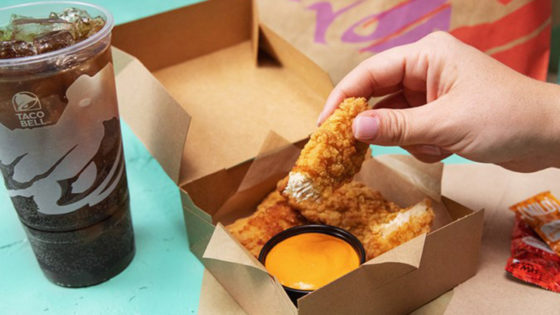

Taco Bell Entering the Fried Chicken Wars
-
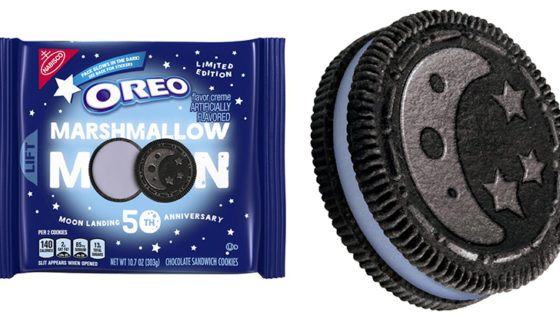

Oreo Announces Five New Cookie Flavors
-


30 Essential Vitamins and Minerals Your Body Needs
-


Krispy Kreme Needs You to Taste Test Three Throwbacks!
-
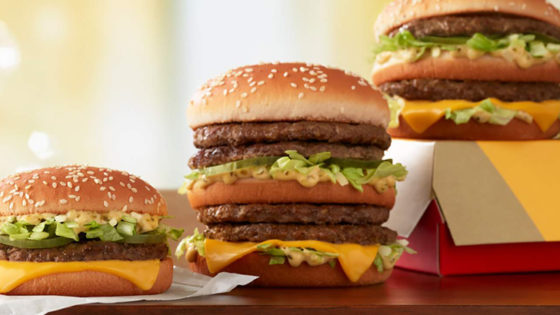

A Miniature Little Big Mac is Hitting McDonald’s Menu
-


25 Brain-Boosting Foods and Drinks to Keep Your Mind Sharp
-
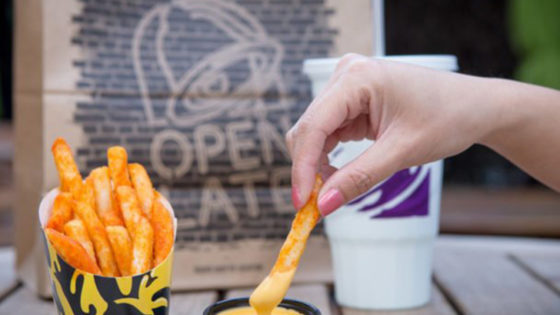

Taco Bell Bringing Back Nacho Fries – with a Surprise…